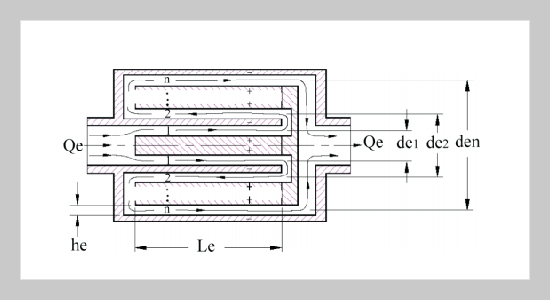W. H. Kuo This email address is being protected from spambots. You need JavaScript enabled to view it.1, Y. C. Lin1 , T. N. Wu2 , J. Guo2 , Y. N. Chen2 and Y. Shiao3
1Department of Mechatronic Technology, Tungnan University, Taipei, Taiwan 222, R.O.C.
2Department of Engineering Science and Ocean Engineering, National Taiwan University, Taipei, Taiwan 106, R.O.C.
3Department of Vehicle Engineering, National Taipei University of Technology, Taipei, Taiwan 106, R.O.C.
REFERENCES
- [1] Whittle, M. and Bullough, W. A., “The Structure of Smart Fluids,” Material Science, Nature, Vol. 358, p. 373 (1992).
- [2] Halsey, T. C., “Electrorheological Fluids,” Science, Vol. 258, pp. 761�766 (1992).
- [3] Coulter, J. P., Weiss, K. D. and Carlson, J. D., “Engineering Applications of Electrorheological Materials,” Journal of Intelligent Material Systems and Structures, Vol. 4, pp. 248�259 (1993).
- [4] Wolff-Jesse, C. and Fees, G., “Examination of Flow Behavior of ERF in the Flow Mode,” Proceeding of the Institution of Mechanical Engineers, Vol. 212, pp. 159�173 (1998).
- [5] Carlson, J. D., “Low Cost MR Fluid Sponge Devices,” Proceeding of the 7th International Conference on Electro-Rheological Fluids and Magneto-Rheological Suspensions, pp. 621�628 (1999).
- [6] Wolff-Jesse, C., “Closed Loop Controlled ER-Actuator,” International J. of Modern Physics B, Vol. 10, pp. 2867�2876 (1996).
- [7] Wolff-Jesse, C., “Untersuchung des Einsatzes Elektroreologischer Flussigkeiten in der Hydraulik,” Ph. D. thesis (in Germany), Aachen, Techn. Hochsch (1997).
- [8] Mhittle, M., Atkin, R. J. and Bullough, W. A., “Dynamics of an ER Valve,” International J. of Modern Physics B, Vol. 10, pp. 2933�2950 (1996).
- [9] Choi, S. B., Cheong, C. C., Jung, J. M. and Choi, Y. T., “Position Control of an ER Valve-Cylinder System via Neural Network Controller,” Mechatronics, Vol. 7, pp. 37�52 (1997).
- [10] Kuo, W. H., “Design and Analysis of Multielectrode Electrorheological Dampers and the application on Vibration Suppression control,” Ph.D. Thesis, Department of Mechanical Engineering, National Taiwan University (2003).
- [11] Cheng, Y. N., Wu, T. N. Kuo, J., Kuo, W. H. and Chung, Y. C., “Study on Multi-Electrode Electrorheological Fluid Damper,” Proceedings of the 18th National Conference on Mechanical Engineering, The Chinese Society of Mechanical Engineers (in Chinese), Vol. 12, pp. 419�426 (2001).
- [12] Gavin, H. P., “Multi-Duct ER Dampers,” Journal of Intelligent Material Systems and Structures, Vol. 12, pp. 353�366 (2001).
- [13] Gavin, H. P., “Design Method for High-Force Electrorheological Dampers,” Smart Material Structures, Vol. 7, pp. 664�673 (1998).
- [14] Boyle, F. P., “Performance Characterization of ER Fluids: Durability,” Proc. 3nd Int. Conf. on Electrorheological Fluids, Carbondale, Illinois USA, pp. 236�245 (1991).
- [15] Merritt, H. E., “Hydraulic Control Systems,” John Wiley & Sons, Inc. pp. 30�35.
- [16] Dixson, J., “The Shock Absorber Handbook,” Society of Automotive Engineers Inc. USA, pp. 249�267 (1999).
















